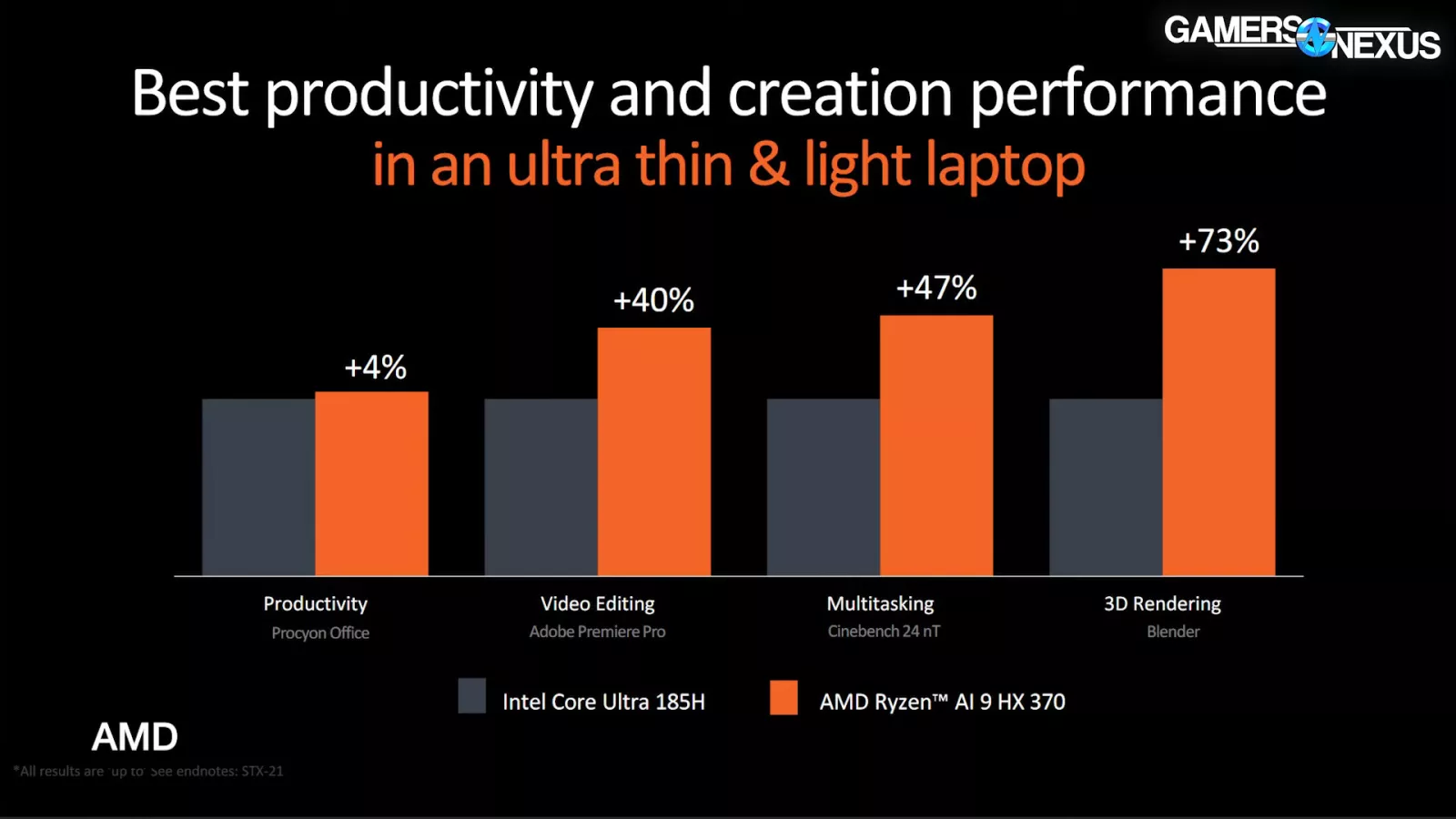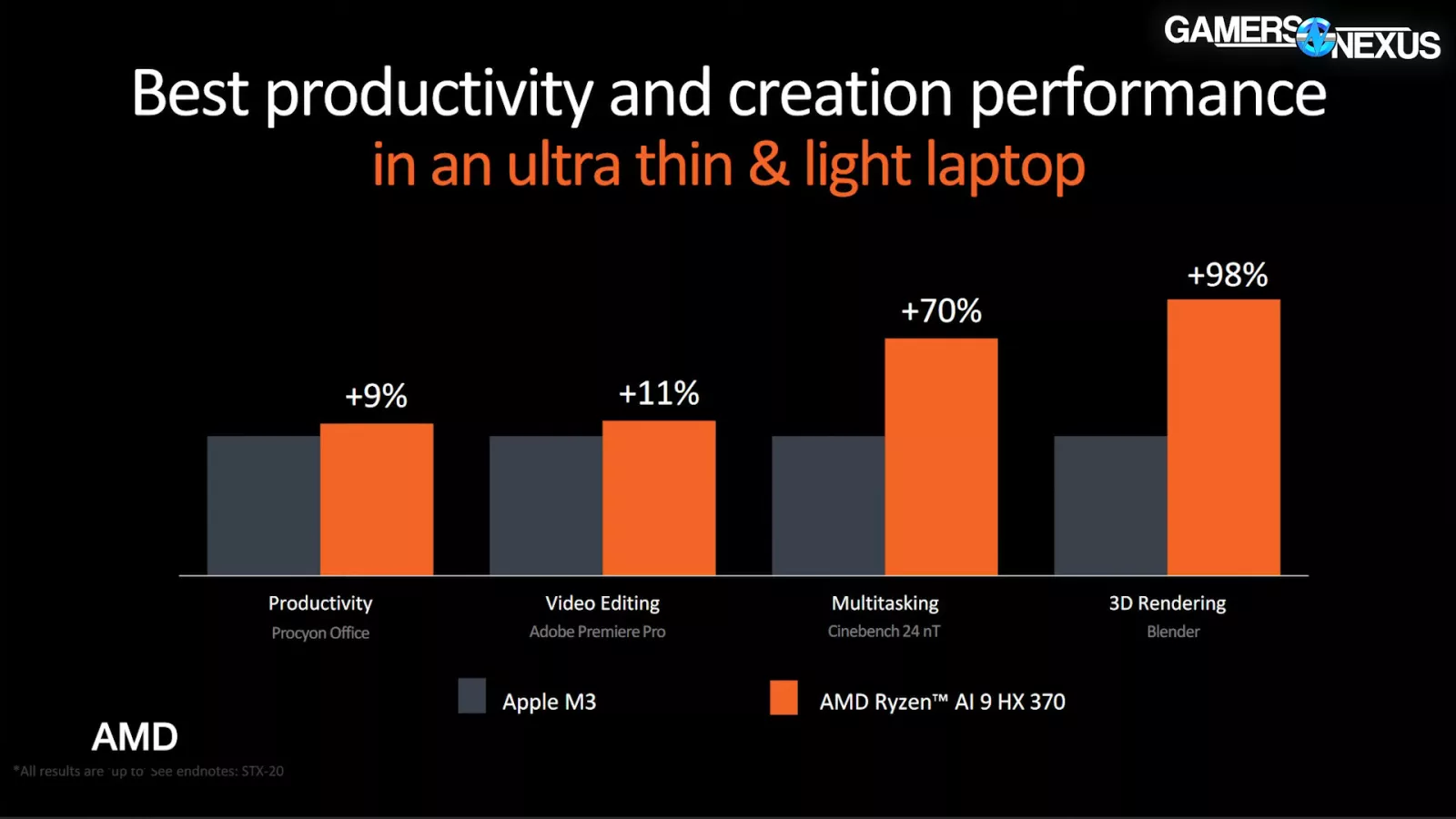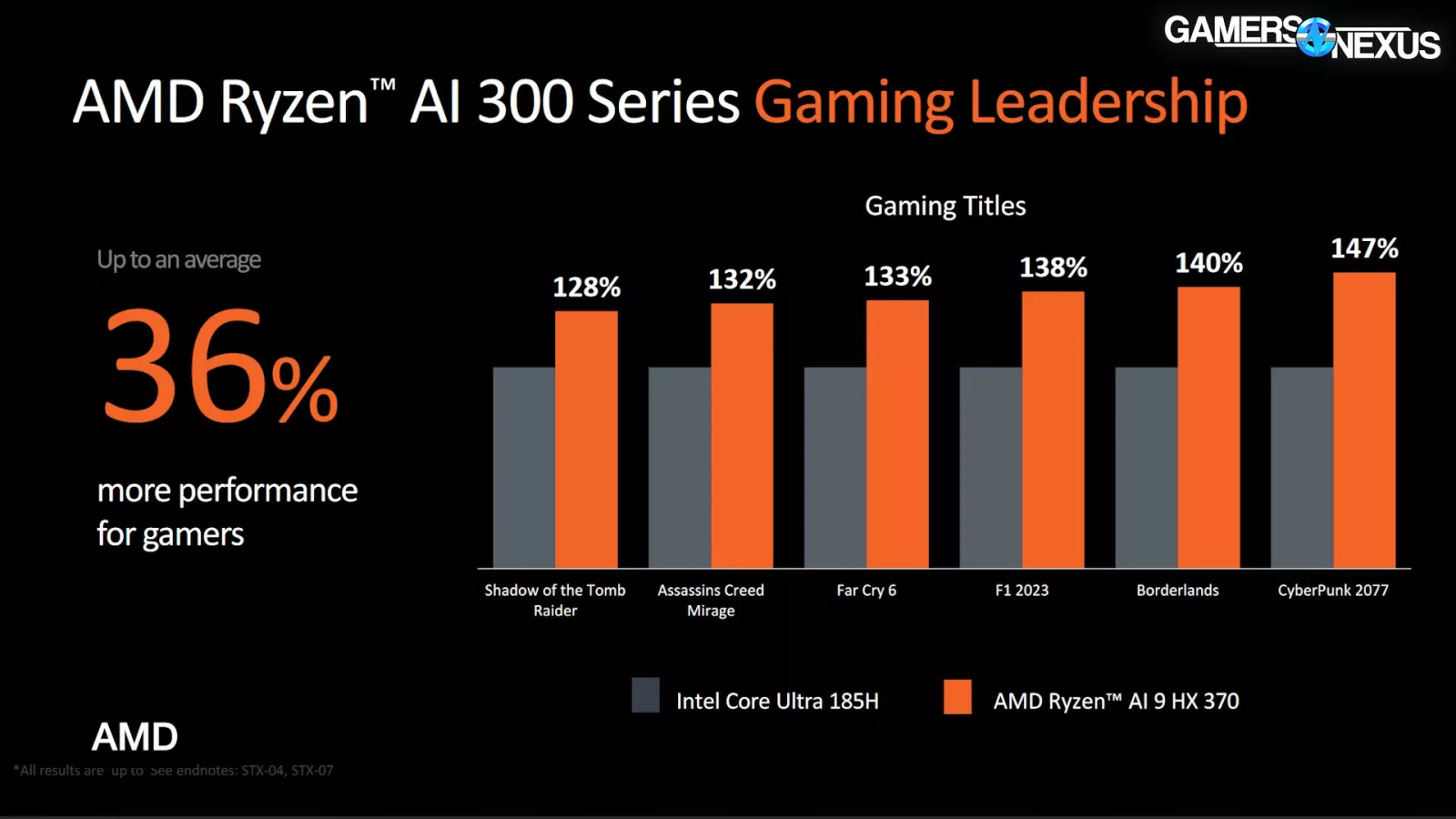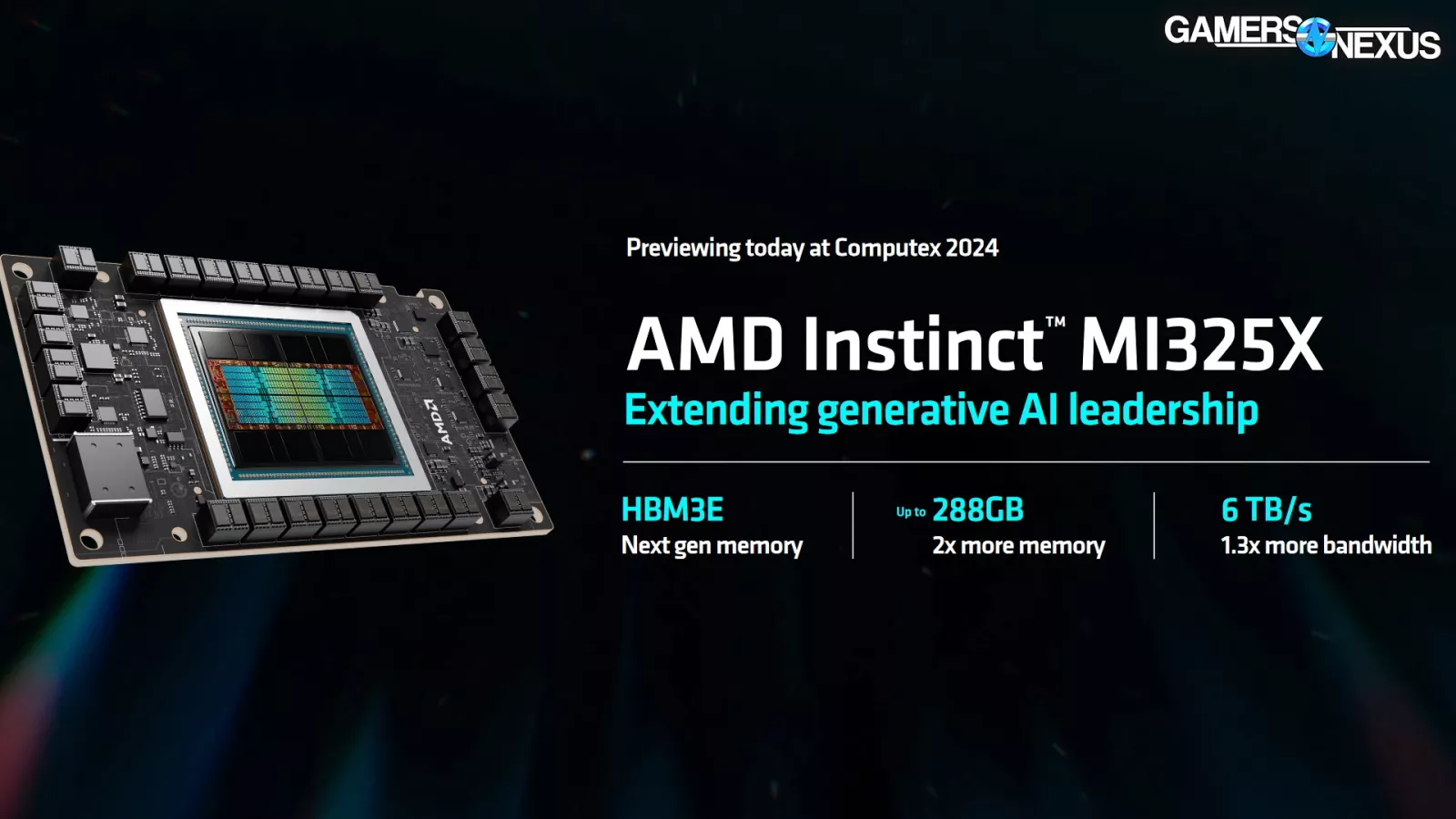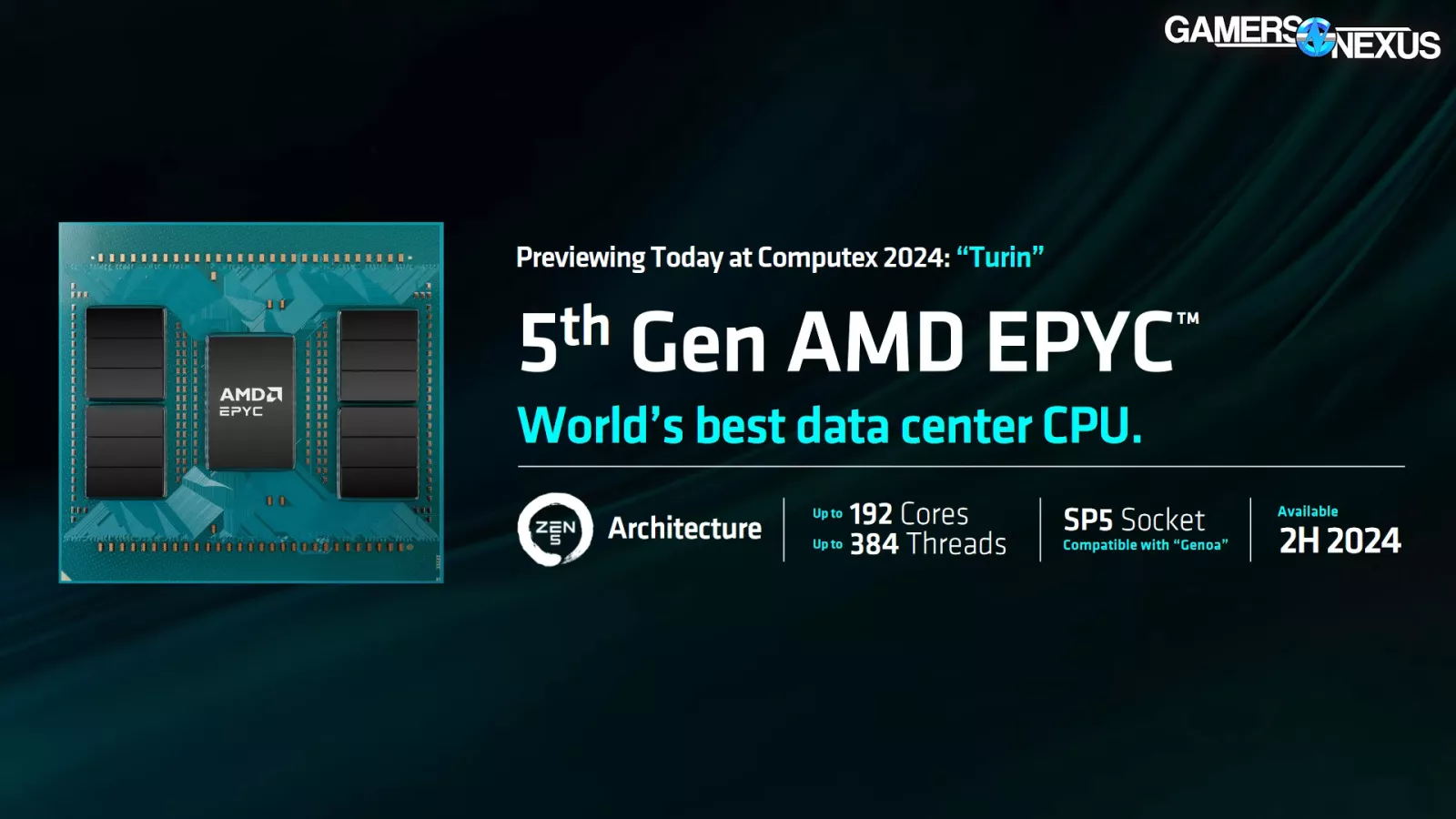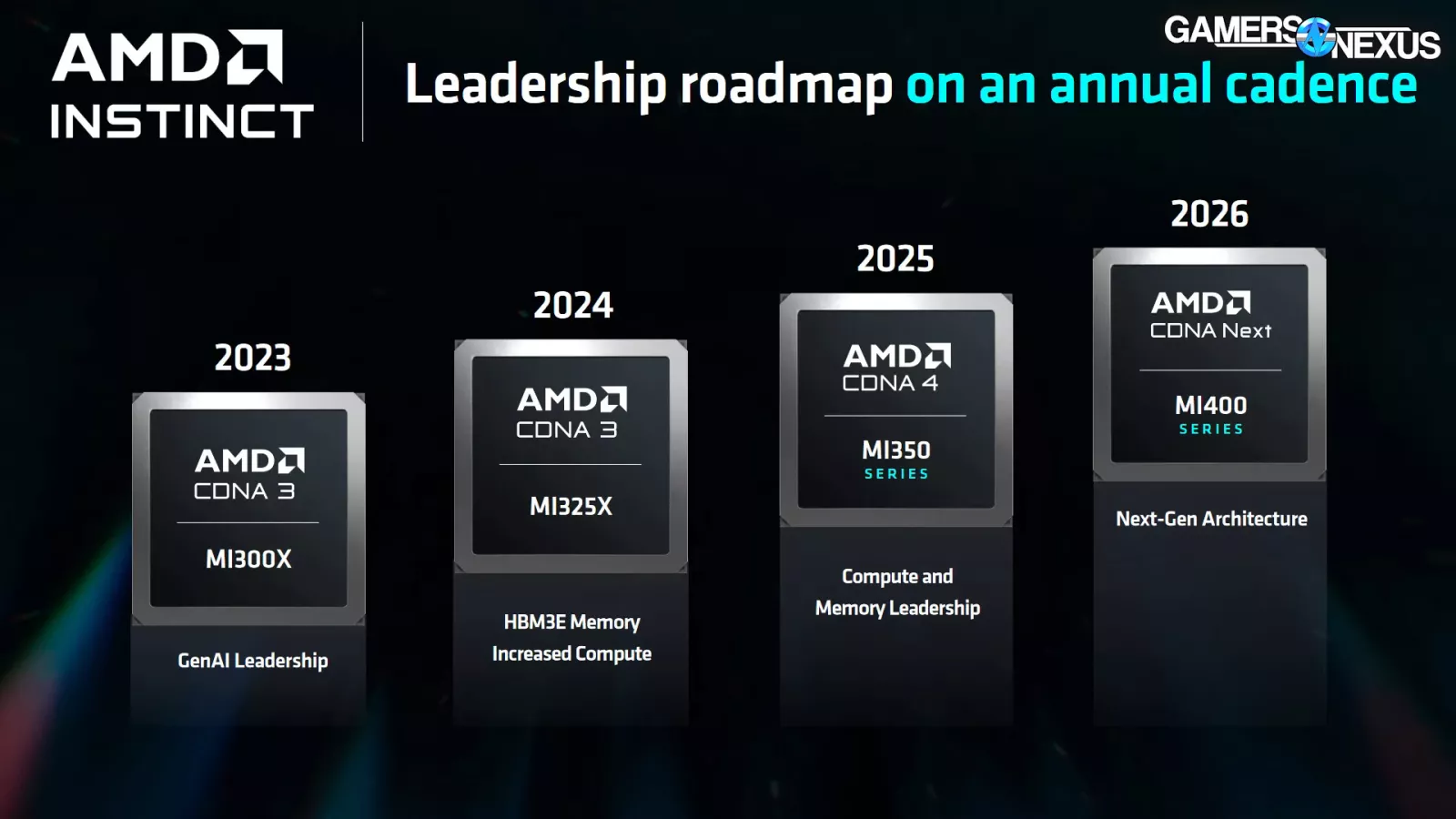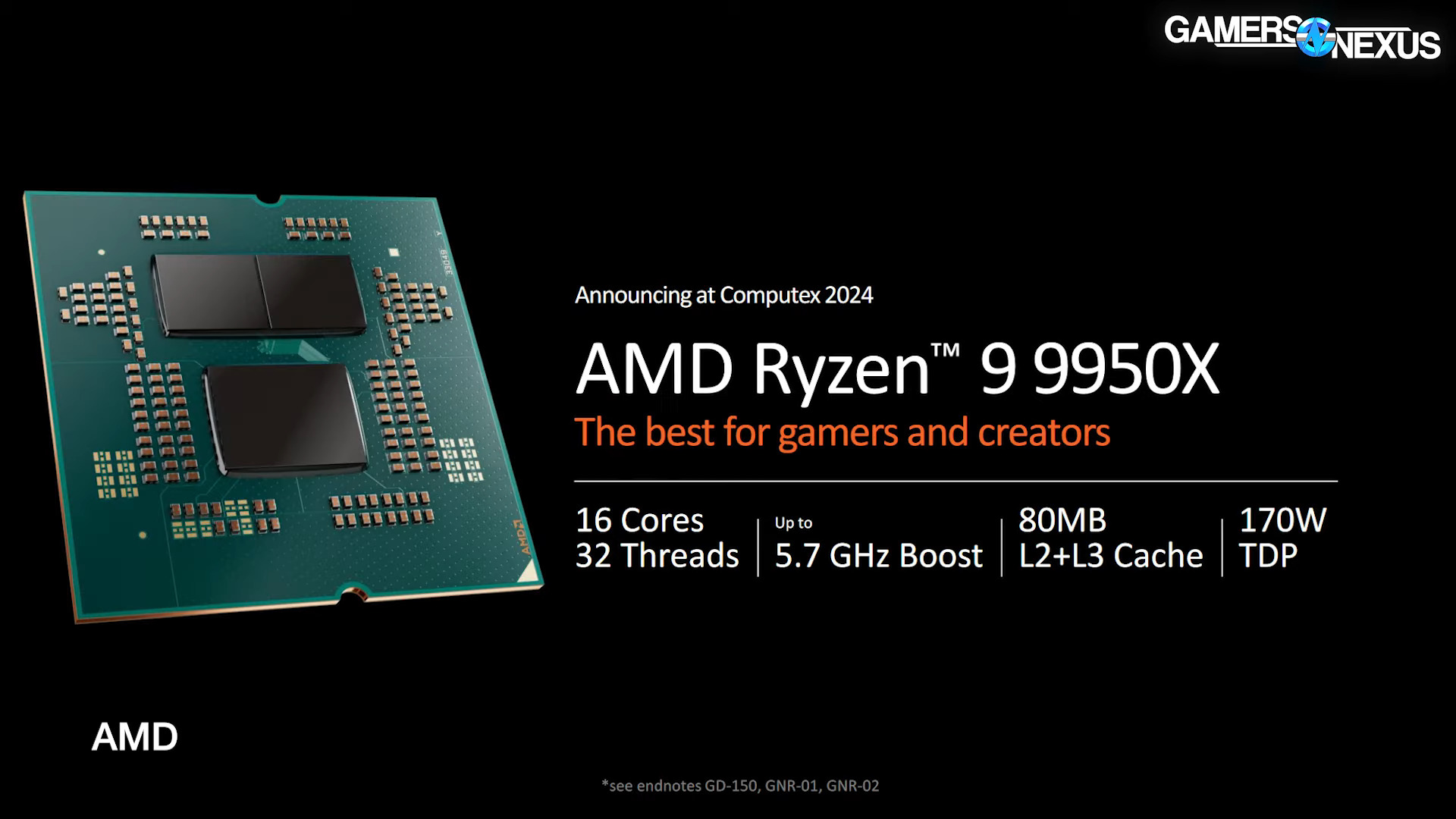
AMD Announces Ryzen 9950X, 9900X, 9700X, & 9600X Zen 5 CPUs, Extends AM5 Life, & AI CPUs
Last Updated:
AMD revealed the next generation of Ryzen CPUs for desktop and mobile.
The Highlights
- AMD makes strong claims of IPC improvement
- Core counts are unchanged versus the previous generation
- Platform support for AM5 extended to at least 2027
Table of Contents
- AutoTOC

Intro
AMD announced its new Zen 5 CPUs, including the Ryzen 9 9950X and several others. The R9 9950X is a brand new 16-core, 32-thread CPU that’ll work on AM5, but will be among the first AMD CPUs to ship with the new Zen 5 architecture. AMD is expecting a relatively large 16% IPC uplift (geomean) against its Zen 4 architecture, which is enough to shake-up the competition between AMD and Intel’s existing 14-series CPUs -- but Intel will launch its own Arrow Lake CPUs in competition towards the end of the year.
Alongside this major architectural announcement, AMD also announced some new AM4 CPUs -- again -- its new X870 and X870E chipsets for future motherboards, and its new Ryzen AI 300 series of CPUs with plenty of “AI PC” buzzwords surrounding them.
We’ll get straight into this one today -- no BS. AMD was fairly straight-forward in its prebriefing with us.
Editor's note: This was originally published on June 2, 2024 as a video. This content has been adapted to written format for this article and is unchanged from the original publication.
Credits
Host, Writing
Steve Burke
Video Production
Mike Gaglione
Vitalii Makhnovets
Writing, Web Editing
Jeremy Clayton
AMD Zen 5 CPUs
Starting with the new CPUs, here’s what AMD sent us for its specs:
There are 4 CPUs announced immediately for July 2024. These include the R9 9950X, R9 9900X, R7 9700X, and R5 9600X, not counting the non-AM5 socket CPUs today.
The core counts are predictable: AMD’s R9 9950X is a 16-core, 32-thread part, the 9900X is a 12-core CPU, 9700X is 8-core, and 9600X is a 6-core CPU.
The 9950X runs 80MB of cache and a 170W TDP. So far, this is all the same as the 7950X. The frequency claims a maximum boost up to 5.7GHz, which AMD’s 7950X also claims. The 9900X is also the same, except for TDP, which is lower. That makes it more efficient than the 7900X as it has otherwise comparable specs at a lower power level, assuming AMD uses the same variables in its formula for TDP. The 9700X and 9600X both see a 100MHz clock increase as compared to the AMD official specs for the 7700X and 7600X, with TDP coming down to 65W from 105W previously. Assuming AMD is using the same variables for its TDP formula, this would indicate a power savings at slightly better specs (plus the benefits from the architectural change).
AMD has not yet announced prices or a specific release day beyond July of this year.
AMD Ryzen 5000 CPUs
Before moving on to the chipset and other architectural information, AMD is also launching its new R9 5900XT and R7 5800XT AM4 CPUs. This pushes AM4’s life yet another year further. In the past, we weren’t big fans of the XT refreshes of AMD’s 3000 series lineup, but things have changed with these.
AMD is not formally announcing a price for these; however, the briefing we were sent did contain pricing of $360 for the 5900XT and $250 for the 5800XT. AMD later retracted this information and stated it was an error. We’re not certain whether it was a typo or the actual pricing but included by accident.
The 5900XT is a 16-core CPU, a notable increase from the prior 5900X’s 12-core solution. That already makes these much different from the older XT refreshes, which were just small clock bumps. The 5800XT is an 8-core CPU.
TDP and clock targets are the same for the 5900XT as the 5900X. The 5800XT has a 100MHz claimed increase by spec sheet.
Launch is July for these as well.
AMD AI 300 CPUs for Mobile
To finalize the CPU hard specs before moving on to the background information and architecture, the Ryzen 300 AI series is also new.
We need to start with the nomenclature for these, because maybe Intel’s “snake oil” presentation finally got under AMD’s skin. AMD has completely changed its CPU naming schema again. As flawed as the snake oil presentation was, Intel had some good points in there about AMD’s naming. AMD’s CPU naming is confusing enough that it has had to introduce a guide for the naming system.
The AMD Ryzen AI is fixed for this family of CPUs. The 9 is what 3, 5, 7, and 9 always mean for Ryzen. The two letters have moved forward in the name to be between the 9 and 3-digit number. The 3-digit number is a change from the 4-digit naming that Gordon and I previously mocked when AMD provided decoder wheels to the press for naming.
AMD says the 3 digits represents the 3rd Gen. OK. It is moving the suffix (like U, HS, H, and HX) and simplifying these letters. AMD said HX indicates that a solution is the top of the stack rather than being representative of thermal tier. The 300 series will now have a configurable TDP from 15W-54W.
Enough of that.
Two of the announced CPUs include the AI 9 HX 370 and AI 9 365. The HX 370 is a 12-core CPU on Zen 5, which brings with it 4nm process. Its max boost is 5.1GHz and base is 2.0GHz. The CPU claims 50 peak NPU TOPS, or Tera Operations Per Second, when using the industry’s new favorite singular number to represent the amalgamation of an entire CPU and billions of transistors. TDP is 28W and cTDP is 15-54, with cache at 36MB and an RDNA 890M IGP running 16 CUs at 2900MHz. AMD also used the phrase “RDNA 3.5” for this generation.
The AI 9 365 is a 10-core/20-thread CPU at up to 5GHz, depending on the power and workload. This one is running an 880M IGP with 12 CUs, a significant cut-down on the GPU component.
Zen 5 Improvements
AMD hasn’t gone too deep into Zen 5 specifics yet -- at least, not in our pre-briefing -- but it did give some basics. We’re expecting more information in July as we get closer to launch.
The company stated three points so far for improvement:
- Improved branch prediction accuracy and reduced latency during branch prediction
- Higher throughput with wider pipelines and vectors
- And deeper window size across design for more parallelism, according to the slide
At this time, we haven’t received any information elaborating on this. It’s possible that AMD’s presentation will contain some more information, but we’ll likely have to wait for the full technical briefing on Zen 5 to get satisfactory detail.
Regardless, the company claims that its Zen 5 improvements contribute to “up to 2x” benefit in instruction bandwidth.
For X870 and X870E, AMD has announced that it will support USB4 on all of these boards. We know that they also have B-series chipsets in the works. AMD noted PCIe Gen5 concurrent support with NVMe Gen 5 and higher EXPO clock support as a notable feature of the X870 and X870E chipsets.
On the NPU and XDNA2 side, AMD announced that this solution is what it calls “the world’s first ‘block FP16 NPU.’” We’ll stop there for the AI discussion for now as just don’t have enough information to go further into it.

Performance Claims
We’ll run our own testing when CPUs become available for review. We always wait for our own numbers before drawing conclusions. In the meantime, we’ll present a few of AMD’s first-party claims. We won’t spend much time here since they are first-party, but it’ll give us an idea for how AMD is positioning the CPUs and which other CPUs it’s challenging the most.
Against its own Zen 4 CPUs, AMD says IPC uplift ranges from 10 to 35% in this slide, with an average of 16% geomean.
In this slide, it shows the 9950X at 4% to 23% advantage over the 14900K. We’ll run our own tests to validate this claim. The company also claims a 7% to 56% uplift in its various tested production workloads.
The company also explicitly mentioned Snapdragon in this slide deck. This has been interesting: Both Intel and AMD have recently expressed an interest in competing with Snapdragon, which almost validates it in a way. The companies must view it as relevant enough to talk about. Both are deep in the x86 world, so it may also be an “enemy of my enemy” situation for them.
Socket Life Extensions for AM5 and AM4
AMD also announced a few other things at the show but they’re out of our usual coverage spectrum, but we’ll quickly go over some of them.
AMD officially announced the extension of its AM5 socket life into 2027 and beyond. This follows the multiple unexpected extensions for AM4. In this front AMD is absolutely killing it for culture support with these platform life extensions making them popular with the gaming enthusiast crowd. It makes it so that you can drop in CPUs later to extend the life of a PC, and is something we’ve been supportive of and we hope that Intel catches on as well.
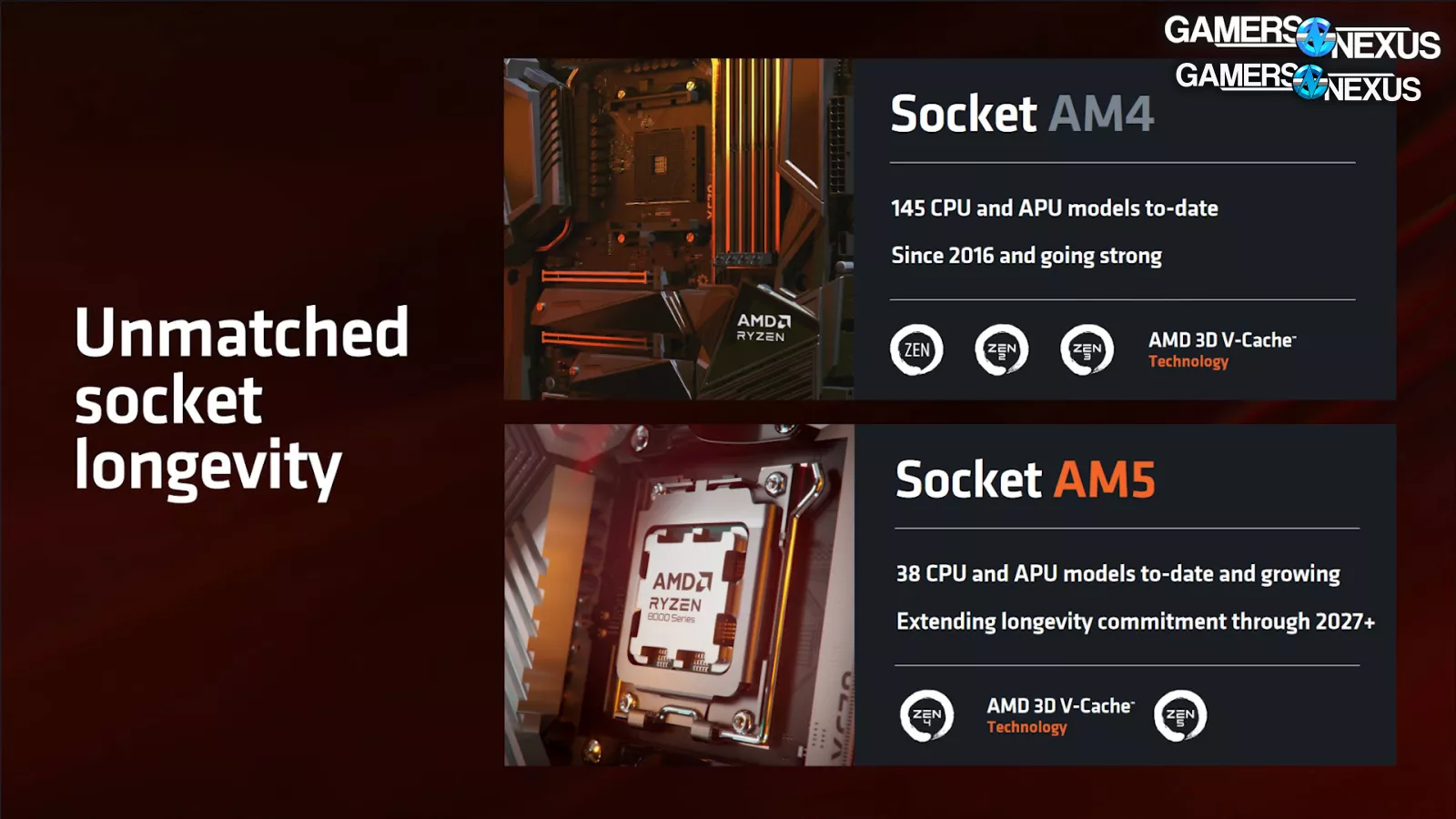
Enterprise and Server
On the enterprise and server solution side, AMD announced the new Instinct MI325X GPUs and 5th Gen AMD EPYC CPUs for the end of 2024. AMD also made it a point to talk about its CPU performance growth almost seemingly in response to NVIDIA’s comments about CPUs having not meaningfully changed in 60 years. You can check out our NVIDIA keynote coverage for commentary on that.
AMD showed its 5th Gen EPYC CPUs at up to 192 cores and 384 threads, and being compatible with socket SP5.
The company also had a slide that says “Ultra Ethernet is the answer for scale out AI infrastructure.” Interestingly Intel and AMD are both on board for this whereas NVIDIA explicitly stated in its meandering pointless keynote that Ethernet is simply not sufficient. The fact that Intel and AMD share a slide is huge, especially in AMD’s own keynote presentation. They’re positioning themselves and their partners as against the proprietary NV link – so this is going to be an exciting battle between (it looks like) just NVIDIA versus everybody.
That covers AMD’s announcements for the show.
We’ve already seen new AM5 X870 motherboards, so we’ll have a separate piece for those coming up. Check back regularly for that coverage and all the other content we’ve already posted from the show. There is a ton of hardware coming out so check back for more.

